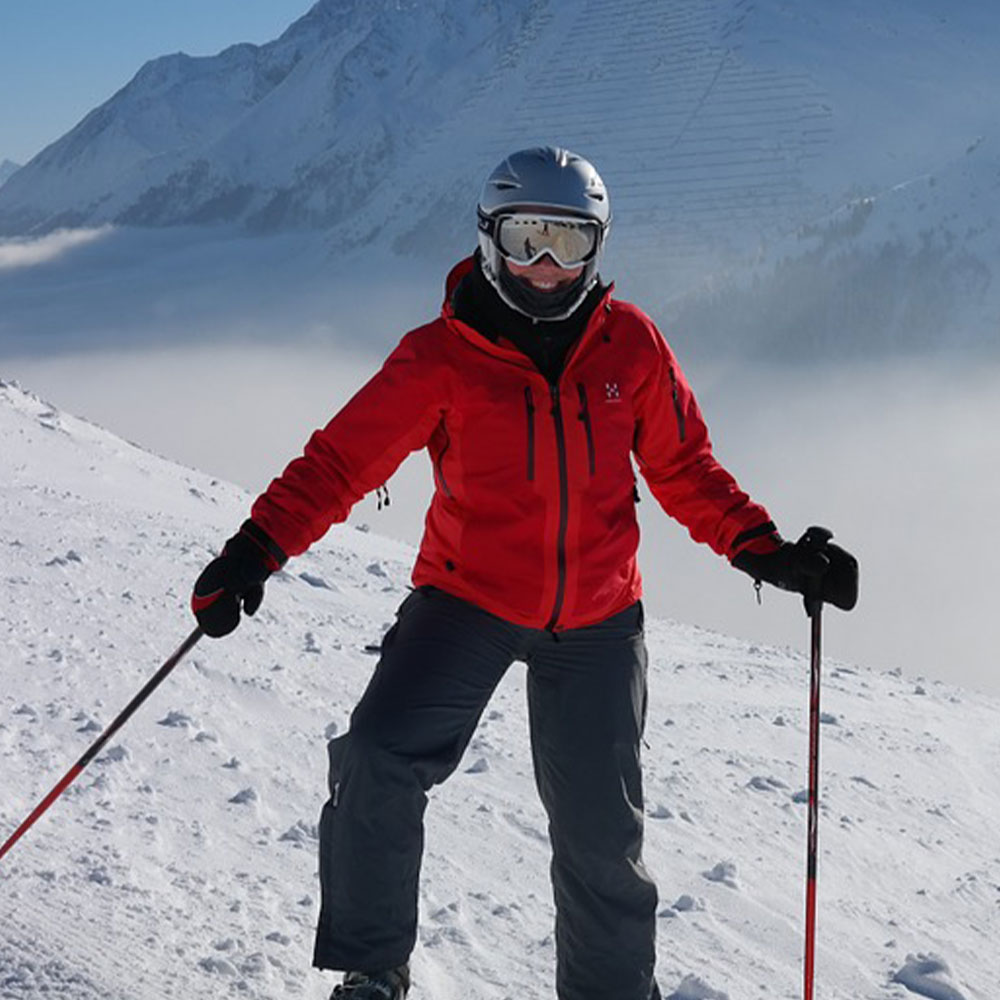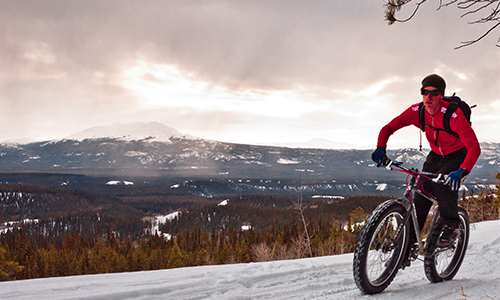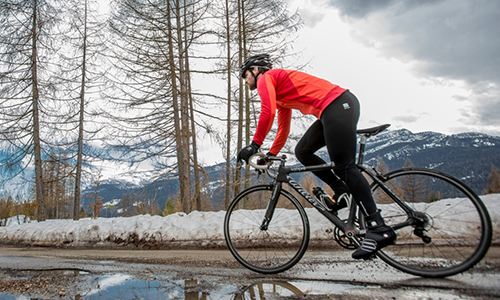Layering Correctly for the Winter Road Ride
Author

A keen runner, skier and nuts about cycling. Karl lives in Cumbria, where he loves encouraging his two children to follow in his outdoor lifestyle. Whilst out and about keeping active, Karl keeps a diary and shares it with Outdoor Look.
 Every gear for the corresponding sport is equally important as the sport itself. For instance, if you are a road cyclist and are planning to put in multiple kilometres each week on your bike, frigid, winter temperature should not hold you back. With proper layering, you can enjoy the long winter road ride, without freezing halfway through.
Every gear for the corresponding sport is equally important as the sport itself. For instance, if you are a road cyclist and are planning to put in multiple kilometres each week on your bike, frigid, winter temperature should not hold you back. With proper layering, you can enjoy the long winter road ride, without freezing halfway through.
Once the temperature starts to dip below zero, more layers and warmer materials become a necessity. To help you follow the passion of road biking, we have listed winter layering tips that will keep you comfortable and cozy on coldest winter rides.
Layer#1 of Winter Road Ride
When it comes to layering, the first layer is the most essential as it is closest to your body and the other layers just add up to it. Your first layer closest to your skin should be of moisture-wicking and quick-drying materials e.g. synthetic blend or wool. However, if you are a skier or snowboarder, you must have a collection of the base layer already with you.
Few of the cycling brands have thermal leggings or thermal bibs in their range, which are specifically designed for winter road riding. If you don't own any of these, you can always slip on a pair of your favourite base layer bottoms before hitting the road.
Layer#2 of Winter Road Ride
When choosing your second layering, it can either be a light vest with a mid-layer or something warmer like soft shells, depending on the weather conditions. Soft shells are popular when it comes to layering because they are designed to provide warmth during the high-result activities despite the damp weather and are quite breathable.
In case you opt for the vest duo with mid layer, make sure that the materials of the garments are breathable and quick-drying. This will keep you feeling fresh and comfortable and lessen the risk of catching a cold due to damp clothing. If you wear clothing that do not wick away moisture and perspiration, you are more likely to get sick.
It is important to keep in mind that the layers you are choosing should not restrict movement and you do not end up feeling uncomfortable. Try stretching before heading for the road to ensure that you have layered up right.
Layer#3 of Winter Road Ride
 When hitting the road, remember that the weather can be uncertain and it is always a good idea to keep yourself prepared. Add a third layer - a waterproof jacket or wind sheeter that will prevent you from getting wet in the rain. When you are planning for a short bike trip, such as commuting to the office from home, you can add a pair of waterproof trousers on the top of your own trousers preventing them getting damp.
When hitting the road, remember that the weather can be uncertain and it is always a good idea to keep yourself prepared. Add a third layer - a waterproof jacket or wind sheeter that will prevent you from getting wet in the rain. When you are planning for a short bike trip, such as commuting to the office from home, you can add a pair of waterproof trousers on the top of your own trousers preventing them getting damp.
While you are choosing a waterproof pants, it is important to keep in mind that the pants should not be too baggy. If the pants you are wearing are too loose, they can easily get caught in your chain ring and rip or jam your chain. If you do choose to wear waterproof pants that are a baggier fit, then roll up the leg on the chain side, wrap an elastic band around to keep the pant leg tight or tuck the pants into your sock.
Essential Winter Road Ride Accessories
Keeping it warm, when cycling during winter months can be a major challenge and thus appropriate accessories are important. Some accessories like a good balaclava, toque or neck warmer are a must for winter road riding. Cold fingers can ruin your entire cycling experience and can be quite painful as well. Various cycling brands sell winter specific mitts or gloves, or else, you can pair a glove liner with another glove for the same effect. Next, you need to pick a shoe cover that offers just that little extra insulation while offering protection at the same time. Pair a shoe cover with warm, cycling socks and you are sure to have warm feet. Add a reliable goggles that will provide you eye protection in the chilly winter conditions and are a must have.
Fighting against the chilly winters is not everyone’s cup of tea and should be done after layering up right. Follow the tips above to create some of the best adventurous bike ride memories.
Author

A keen runner, skier and nuts about cycling. Karl lives in Cumbria, where he loves encouraging his two children to follow in his outdoor lifestyle. Whilst out and about keeping active, Karl keeps a diary and shares it with Outdoor Look.
Categories
- Sport (28)
- Product Reviews (3)
- Team Outdoor Look (7)
- Mike Wild (2)
- Mike Payton (2)
- Suse Hammond-Pears (3)
- Snowboarding (12)
- Latest Offers (105)
- Shop Talk (1)
- Competitions (7)
- Walking (413)
- Lifestyle Fashion (8)
- Travel (86)
- Kit Guides (176)
- Workwear Clothing (6)
- Safety Workwear (4)
- Health/Fitness (289)
- Skiing (91)
- Great Outdoors (1316)
- Cycling (92)
- January 2025
- December 2024
- November 2024
- October 2024
- September 2024
- August 2024
- July 2024
- June 2024
- May 2024
- April 2024
- March 2024
- February 2024
- January 2024
- December 2023
- November 2023
- October 2023
- September 2023
- August 2023
- July 2023
- June 2023
- May 2023
- April 2023
- March 2023
- February 2023
- January 2023
- December 2022
- November 2022
- October 2022
- September 2022
- August 2022
- July 2022
- June 2022
- May 2022
- April 2022
- March 2022
- February 2022
- January 2022
- December 2021
- November 2021
- October 2021
- September 2021
- August 2021
- July 2021
- June 2021
- May 2021
- April 2021
- March 2021
- February 2021
- January 2021
- December 2020
- November 2020
- October 2020
- September 2020
- August 2020
- July 2020
- June 2020
- May 2020
- April 2020
- March 2020
- February 2020
- January 2020
- December 2019
- November 2019
- October 2019
- September 2019
- August 2019
- July 2019
- June 2019
- May 2019
- April 2019
- March 2019
- February 2019
- January 2019
- December 2018
- November 2018
- October 2018
- September 2018
- August 2018
- July 2018
- June 2018
- May 2018
- April 2018
- March 2018
- February 2018
- January 2018
- December 2017
- November 2017
- October 2017
- September 2017
- August 2017
- July 2017
- June 2017
- May 2017
- April 2017
- March 2017
- February 2017
- January 2017
- December 2016
- November 2016
- October 2016
- September 2016
- August 2016
- July 2016
- June 2016
- May 2016
- April 2016
- March 2016
- February 2016
- January 2016
- December 2015
- November 2015
- October 2015
- September 2015
- August 2015
- July 2015
- June 2015
- May 2015
- April 2015
- March 2015
- February 2015
- January 2015
- December 2014
- November 2014
- October 2014
- September 2014
- August 2014
- July 2014
- June 2014
- May 2014
- April 2014
- March 2014
- February 2014
- January 2014
- December 2013
- November 2013
- October 2013
- September 2013
- August 2013
- July 2013
- June 2013
- May 2013
- April 2013
- March 2013
- February 2013
- January 2013
- December 2012
- November 2012
- October 2012
- September 2012
- August 2012
- July 2012
- June 2012
- May 2012
- April 2012
- March 2012
- February 2012
- January 2012
- December 2011
- November 2011
- October 2011
- September 2011
- August 2011
- May 2010
- April 2010
- March 2010
- February 2010
- January 2010
- November 2009
- October 2009
- September 2009
Submit a Comment